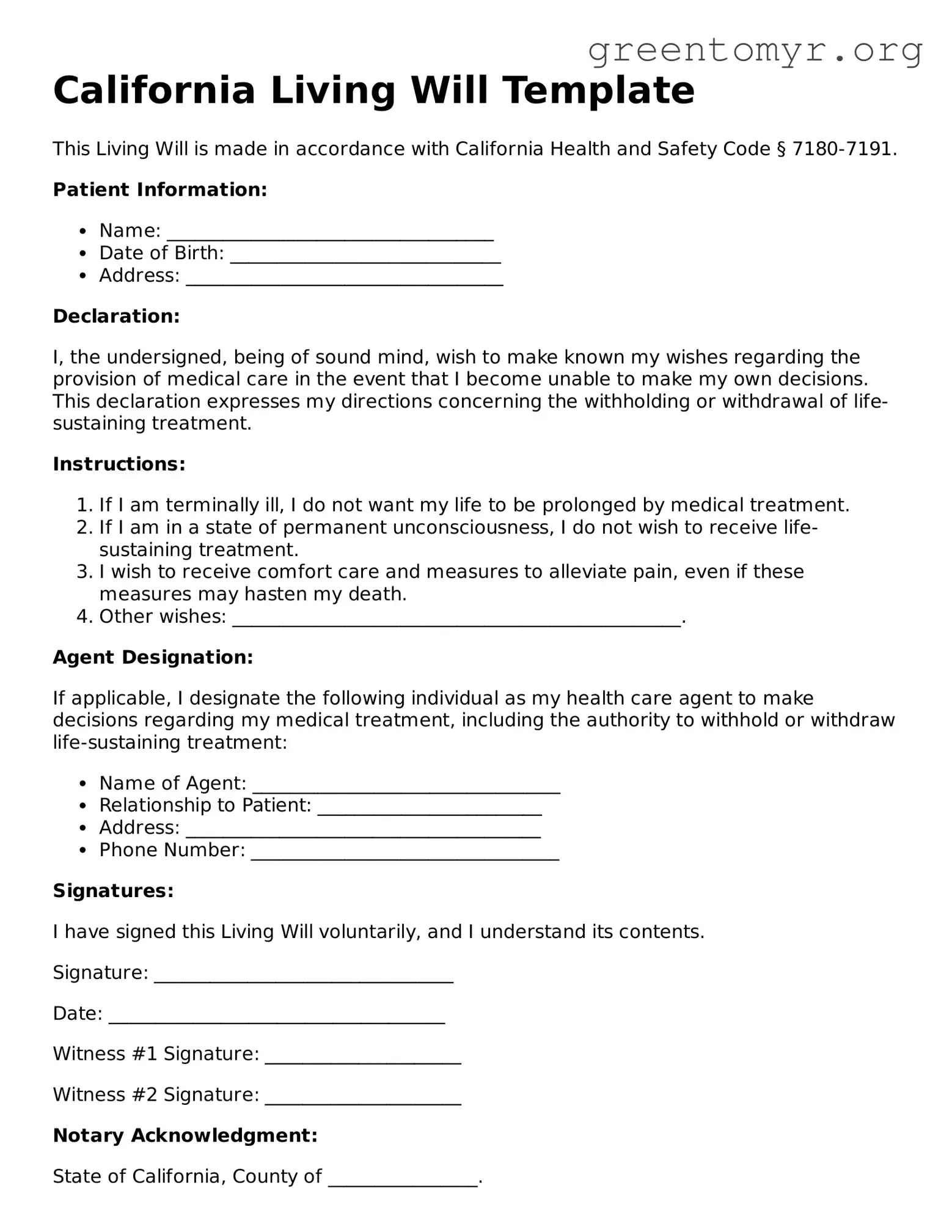California Living Will Template
This Living Will is made in accordance with California Health and Safety Code § 7180-7191.
Patient Information:
- Name: ___________________________________
- Date of Birth: _____________________________
- Address: __________________________________
Declaration:
I, the undersigned, being of sound mind, wish to make known my wishes regarding the provision of medical care in the event that I become unable to make my own decisions. This declaration expresses my directions concerning the withholding or withdrawal of life-sustaining treatment.
Instructions:
- If I am terminally ill, I do not want my life to be prolonged by medical treatment.
- If I am in a state of permanent unconsciousness, I do not wish to receive life-sustaining treatment.
- I wish to receive comfort care and measures to alleviate pain, even if these measures may hasten my death.
- Other wishes: ________________________________________________.
Agent Designation:
If applicable, I designate the following individual as my health care agent to make decisions regarding my medical treatment, including the authority to withhold or withdraw life-sustaining treatment:
- Name of Agent: _________________________________
- Relationship to Patient: ________________________
- Address: ______________________________________
- Phone Number: _________________________________
Signatures:
I have signed this Living Will voluntarily, and I understand its contents.
Signature: ________________________________
Date: ____________________________________
Witness #1 Signature: _____________________
Witness #2 Signature: _____________________
Notary Acknowledgment:
State of California, County of ________________.
Subscribed and sworn before me on this ____ day of ____________, 20__.
Notary Public Signature: ________________________
My Commission Expires: ______________________
